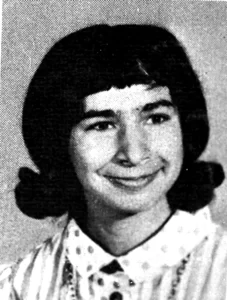
Rosemary Calandrillo would be 81 years old this month if she had not been murdered some time on or near Aug. 25, 1969.
The family grieved, the town grieved, the students at Henry Hudson grieved.
What made matters even more horrific and difficult for everyone to accept, was that Rosemary Calendriello’s body has never been found. So there was no funeral, no grieving over a young body gone too soon, no burial place to visit, no place to grieve since no one even knows to this very day where she was murdered.
There is one person and one result which gave this borough and the Calandriello family at least a bit of solace in this tragic deed: Samuel Guzzi and the distinction that through his dedication, hard work, and perseverance, this was the first time that a person was found guilty of murder without a body ever being found.
The murderer, Robert Zarinsky, spent about 33 years of a life sentence in prison before he died there Nov. 28, 2008 from pulmonary problems.
But this story is not about Zarinsky, it is about the policeman, who later became Chief of Police, the dogged investigator who never gave up.
Sam Guzzi was born in Long Branch and spent all his life in Atlantic Highlands. In 1944, he joined the Army, went to Fort Dix, then Sheppard Field in Texas, then to the Philippine Islands then to Japan. He was discharged more than a year after the end of the war, having attained the rank of Sergeant.
Eight years later, in May 1954, Sam Guzzi became a police officer on the local department. Thirteen years later he was promoted to Sergeant and was assigned to the investigative force as a plainclothesman.
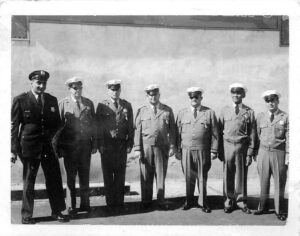
Sam Guzzi, far left, as a patrolman in the 1960s with Atlantic Highlands auxiliary police officers
Five years after that he was a Captain and five years later, headed the department as Chief, following in the footsteps of another outstanding Police Chief and neighbor, James Egidio.
Sam served in that position for ten years, until he retired and immediately went back to serve the public as an agent with the Monmouth County Prosecutors Office. He served another 18 years in that position before retiring in 2008. Five years later, on July 11, 2013, Sam died.
But Sam Guzzi never thought he did anything spectacular. He always thought he was just doing his job. He didn’t believe in leaving a job until it was finished. And while he always felt a sense of loss he could never return her body to her family, Investigator Sam Guzzi did bring justice and a sense of accomplishment in having Zarinsky pay at least ten years for this crime.
Sam was on duty the night of Aug. 25, 1969, when Rosemary’s mother Agnes came into police headquarters and told Det . Sgt. Guzzi that Rosemary, her 17 year old daughter, was missing. Rosemary had walked down the street from her home on Center Ave. to the deli a couple of blocks away about 6 in the evening. Unusual in such a small close knit town, for a missing daughter’s report, especially since Rosemary was a quiet girl, obedient to her parents and a great help especially since her dad was ill.
It didn’t take Sam long to investigate and come up with his starting information. By morning, some boys who knew Rosemary from the neighborhood and from school told Sgt. Guzzi they saw Rosemary in a car with a stranger, even a more rare situation for a youngster taught never to go with strangers. The boys were so surprised by what they saw they even followed the car a while, enough to be able to give a description to Sam. The investigation began and many different clues led Sam to Robert Zarinsky, a grocer in Linden, and a man with a less than perfect criminal history. He was charged with contributing to the delinquency of a minor, since Sam also learned he reportedly had offered alcohol to two underage girls he had stopped on another street on another day.
All of this led to further investigations and further hints. Zarinsky was seen washing the trunk of his car, one that resembled the one the boys had said they had seen Rosemary in. That’s when the Police found the window and door handles on the passenger side of the front passenger side door were missing.
One of Rosemary’s hair clips was on the floor, and a piece of lingerie similar to Rosemary’s was on the back floor. There was also a hammer there, with a bloodstained hair stuck to it.
The boys identified Zarinsky as the man in the car with Rosemary.
Zarinsky was convicted of contributing to the delinquency of a minor, but he beat that charge on appeal later and was released. The hair in the car was not Rosemary’s, but did belong to another teenager whose body was found in the Raritan River. She had been strangled with an electrical card.
Sam learned more, investigated further and was convinced Zarinsky was a serial killer. That strengthened his determination to find him, try him, have him pay for his crimes and prevent any further crimes. Towards that end, Sam worked day and night, following up on every tip, researching every clue, getting proof of everything he presented to the prosecutor. Once he felt convinced that even though Rosemary’s body was never found, he was positive he could convince a jury Zarinsky was the murderer.
The prosecutor disagreed and now Sam felt he had still another chore; he had to convince the prosecutor the matter should go to court.
It took five years and a new prosecutor was named, John Mullaney was the assistance prosecutor, Malcolm Carton was the first assistant, and Guzzi convinced them all.
Zarinsky went to trial. He was found guilty and convicted of Rosemary’s death on April 24, 1975, and sentenced to life behind bars. It had never happened before, a murder could be proved, the murderer convicted with no body ever found.
Even all of that was not enough. Sam Guzzi continued to follow every lead as to where Rosemary’s body may be for the next decade.
Nor did Zarinsky let up on Guzzi. He was also a suspect in the disappearance and deaths of at least half a dozen other young women. He sent a letter to the retired Guzzi in 1994 saying he would be of immeasurable value to law enforcement. A few years later, he wrote him again, when he was a suspect in a 1958 murder, this time of a Rahway police officer. And bragged he could solve at least five, probably ten homicides.
Then in 1988, after denying for years he had anything to do with Rosemary, he said he accidentally backed his car up over her and buried her in a shallow gave someplace in north Jersey. He changed that story later, and said he threw her body into the ocean. He was up for parole at the time and hoped admissions could benefit his cause. They did not.
Then there were two more girls murdered in Woodbridge, both strangled with an electrical cord. Insufficient evidence to convict on any of those murders, the prosecutor said.
There was not enough evidence to prosecute in any of the cases.
That police officer shooting? Zarinsky was acquitted of that one as well. And while in prison in 2008, Zarinsky was accused of yet another murder, this one of a 13 year girl who had been raped, beaten and strangled back in 1968. But the murderer died while awaiting trial on that charge.
Sam Guzzi worked hard for decades and kept a serial killer from killing even more young girls, police officers or anyone else.
He’s a part of New Jersey investigative history. And in Atlantic Highlands, Police Chief Samuel Guzzi is truly a legend.
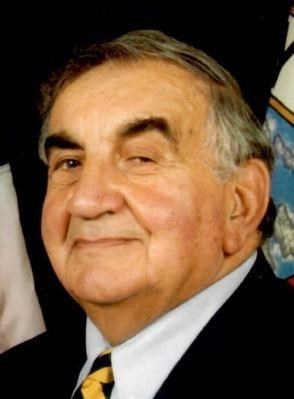
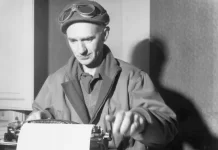
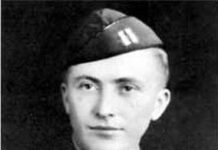

Very good Accout
WHAT A BEAUTIFUL TRIBUTE TO A TRUE LEGEND IN THE FIELD OF LAW ENFORCEMENT. HAVING BEEN THERE TO SEE HOW HE WORKED SO HARD AND LONG ON THIS CASE WAS SOMETHING ELSE TO WITNESS. YOU HAVE DONE A GREAT PUBLIC SERVICE BY BRINGING HIS STORY TO LIFE TO THOSE WHO WERE NOT AROUND BACK THEN TO FOLLOW IT.
SAM WOULD BE VERY HAPPY I’M SURE.
Comments are closed.